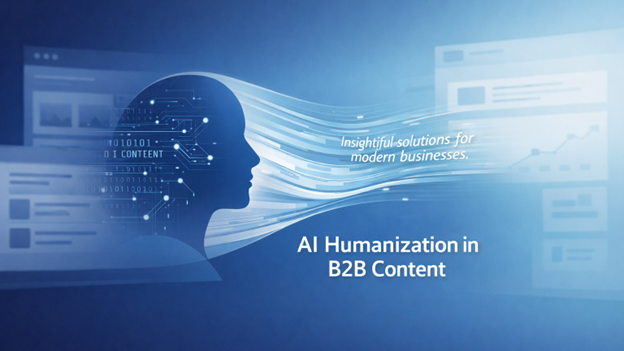How To Create A Solid Content Management Strategy In 2023?

Source: Pexels
According to a study by Content Marketing Institute, approximately 73% of B2B brands utilize content marketing as their lead marketing approach. This has made developing a rock-solid content management strategy in 2023 non-negotiable.
In this article, we'll learn some proven tips to help you craft a robust content management strategy that will not only reach your target audience but also resonate with them.
What Is A Content Marketing Strategy?
Imagine you're constructing a building.
You wouldn't just start piling bricks on top of one another without a blueprint, right? A content management strategy is that blueprint for your content. It's like having a game plan that guides you on what content to create, who it's for, where and when to share it, and how to measure its success.
Without this strategy, content creation can be chaotic and directionless, like throwing darts in the dark.
Content management strategy is a roadmap showing you the best route to reach your goals, whether that's building your brand, connecting with customers, or growing sales. It helps you create content that not only looks good but does good - for your audience and your business.
A crucial aspect of modern content management is optimizing visual assets for marketing. PiktID provides a SaaS solution for automated image editing, enabling businesses to create variations of marketing images for more efficient A/B testing.
By automating edits, you can quickly generate multiple image versions to test with different target audiences. This helps maximize click-through rates (CTR), allowing marketing teams to fine-tune visual content based on real-time user feedback, ensuring more effective campaigns.
Reasons Why You Need An Effective Content Management Strategy
Content marketing is more or less the headspear of publicity for any brand. And here’s why you need an effective strategy to manage it:
Streamlining Creation & Enhancing Collaboration
A robust content management strategy organizes the planning, creation, and scheduling of content. It fosters collaboration between writers, designers, and marketers, ensuring alignment with goals and timelines. Utilizing a team management tool not only eliminates redundancy but also makes the content creation process more efficient and responsive to market demands.
Building Brand Consistency & Personalizing Customer Experience
Consistent brand messaging builds trust and recognition. A content management strategy ensures uniformity while allowing for personalized content experiences. Leveraging data within a CMS enables targeted content that resonates with different audience segments, enhancing engagement and satisfaction.
Improving Visibility & Analyzing Performance
An effective content management strategy incorporates SEO best practices, increasing online visibility. Moreover, continuous tracking and analytics provide insights into content performance. This data-driven approach enables ongoing refinement, ensuring that your content stays relevant and engaging, thereby boosting organic traffic and conversions.
Maintaining Compliance & Reducing Costs
Depending on your industry, content must comply with certain regulations. A well-defined strategy ensures adherence to legal requirements while also reducing operational costs by avoiding duplication and streamlining processes. This cost-effectiveness is key to managing resources, especially in growing businesses.
Enhancing Engagement & Enabling Scalability
Well-planned and managed content encourages interaction and engagement with your audience. It creates a dynamic relationship between your brand and its customers. Additionally, a robust content management strategy allows for scalability, accommodating growing content needs without compromising quality or overwhelming resources.
14 Tips For Creating A Solid Content Management Strategy In 2023
Let’s quickly go through some proven approaches to creating a content management strategy that really works.
Tip 1: Define Your Objectives
Setting clear and defined objectives is the first step in developing a content management strategy. You need to ask questions like:
- What are your content goals?
- Is it improved brand exposure, lead generation, customer interaction, or conversions?
- How much exposure or lead within a specific time frame?
To be effective, your objectives must be SMART - Specific, Measurable, Achievable, Relevant, and Time-Bound. Instead of aiming for "more website traffic” - which is vague, you should set a target to "increase website traffic by 20% in the next quarter."
Tip 2: Understand Your Audience
A thorough understanding of your audience is fundamental to your content management strategy. You can’t create content that moves the needle without understanding who you are writing for. Segmenting your audience into specific groups can help you easily understand these. With the assistance of a Writing Assistant, you can streamline this process and tailor your content more effectively.
To learn more about your target audience, use surveys, website analytics, or social listening techniques. Such information will influence the type of content pieces you create, when it is published, and your distribution channels
Tip 3: Make Content Audit A Regular In Your Strategy
A content audit means evaluating all your previously created content to assess its effectiveness in meeting your brand goals and objectives. It provides insights into:
- what's working
- what's not,
-and areas for improvement.
This includes checking for outdated information, content gaps, SEO performance, and audience engagement metrics.
There are tools available that can automate this process, providing comprehensive reports that can guide your content creation efforts moving forward. The results of your audit will in turn help you repurpose valuable content, update low-performing pieces, and discard the irrelevant ones.
Tip 4: Raise SEO Priority
SEO (Search Engine Optimization) is an essential component of content management. If your content is not even seen, it’s as useless as any other unpublished piece. Moreover, organic traffic gotten through SEO is 1000% more than that gotten from other traffic sources like social media.
Effective SEO involves keyword research, optimizing your content around these keywords, and creating valuable backlinks. Also, remember to prioritize technical SEO aspects like mobile optimization and fast loading speeds to improve user experience. Prioritizing SEO not only enhances your content's visibility but also streamlines your workflow in project management by ensuring all content produced aligns with SEO best practices.
Tip 5: Leverage AI and Automation To Create Smooth Workflows
Source: Pexels
AI and automation are critical tools in creating productivity workflow, some of the more sophisticated ones are useful for automating tasks such as content scheduling, posting, and even analytics, giving you more time to focus on content creation and strategy.
Automations generally ensures efficiency in task delegation, ensuring content tasks are completed promptly and correctly. Be sure to research and choose the right AI and automation tools that fit your needs and objectives. Alongside automation, marketing strategy templates can provide a structured approach to planning your campaigns and aligning them with your content goals.
Tip 6: Focus On High-Quality Content
Any content management approach relies on high-quality content. Make sure your material is valuable, entertaining, and informative to your target audience. This involves keeping up with industry trends and news, understanding what your audience wants to learn, and delivering that in an engaging manner.
It’s also important to note the necessity of quality content for a good ranking on SERPs. Most search engines like Google and Bing prioritize your content and how much value it can give readers.
Tip 7: Content Distribution Strategy
Content distribution is perhaps the deal-closer for your content strategy. Only content that is seen can be read.
Include a mix of channels to distribute your content - social media, email marketing, blog posts, and even guest posting on other websites. That way, you won’t have to wait for SEO to do everything.
Ensure you tailor your content to fit each distribution platform in order to maximize engagement. Additionally, analyze the performance of your distribution channels to adjust your strategy whenever it’s essential.
Tip 8: Embrace Cross-Platform Content Management
Consumers today access content from various devices like smartphones, tablets, and desktops. It's essential to adapt your content for these different platforms to ensure a consistent and engaging user experience.
You can achieve this by using responsive design principles in your website and content layouts. Test your content on different devices to ensure that it looks and functions well everywhere.
Utilizing tools and frameworks that offer cross-platform support, and partnering with design and development experts who specialize in creating content that works seamlessly across various platforms is also important.
Tip 9: Foster a Culture of Continuous Learning and Adaptation
Keeping up with the ever-changing digital landscape requires continuous learning and adaptation. Foster a culture within your content team that emphasizes ongoing education.
Encourage team members to attend workshops, webinars, and conferences. Provide access to online courses and industry publications. Regularly review and update your content strategies to align with new trends and technologies. By promoting a mindset of continuous improvement and adaptation, you'll keep your content strategy fresh, innovative, and competitive.
Tip 10: Utilize Analytics
Analytics play a critical role in every marketing strategy and even more for content management. You definitely want to track and monitor the progress and effectiveness of the strategy you’ve developed.
Some tools like Google analytics makes it easy to track certain metrics like open rate of each content, time on page, and even bounce rate. You can then use this data to refine your content management strategy better.
Tip 11: Prioritize UGC
User-generated content (UGC) is a black horse approach used by even top brands like Apple and Nike. UGC is content created by your audience and it can come as reviews, testimonials, social media posts, or blogs.
Most customers and target prospects see UGC as a credibility mark for your brand. In turn, you are able to get their trust and find it easier when walking them through the sales funnel. As such, your content management strategy must prioritize UGC and ensure it is a core part of your content cycle.
Tip 12: Papers Need Management, Your Team Needs Collaboration
Source: Pexels
Collaboration is key to a successful content management strategy. A team that works together effectively can generate ideas that resonate more powerfully with your audience. Use collaboration tools that enable seamless communication and idea sharing, including real-time document editing and comment threads.
Regular meetings to discuss goals, brainstorm ideas, and review progress will keep everyone aligned. Encourage different departments to contribute insights, as marketing, sales, and customer service may each have unique perspectives that can enrich your content.
Tip 13: Don’t Sideline Visual Content
Visual content, including images, videos, and infographics, can be a potent tool in your content management strategy. They often convey information more quickly and engagingly than text alone. Hiring an event videographer can elevate your visual strategy by adding professionally captured videos that resonate with and captivate your audience
Develop a coherent visual strategy that complements your brand's voice and enhances your written content. Utilize quality images and videos that are relevant and appeal to your audience's emotions. Tools like AI video generators and image enhancers can help elevate your visuals, streamlining the process and making your content visually attractive without the need for professional design skills.
One such tool is Picsart, which offers features like an easy image background remover. This feature allows you to effortlessly remove or alter the backgrounds of your images, further enhancing their appeal by focusing on the main subject. It saves you precious time and doesn't require extensive editing skills.
Tip 14: Regular Review and Adjustment
Time is dynamic and so is the trend. And that means a content management strategy working today will also work well tomorrow or in other scenarios.
In order to make sure your content management strategy is at-all-the-time fluid, regularly review and adjust it based on performance metrics and changes in your audience's behavior or industry trends.
Conclusion
Crafting a robust content management strategy in 2023 involves a blend of creativity, strategic planning, and keen understanding of your audience's needs. It's about defining your objectives, understanding your audience, performing a regular content audit, and prioritizing SEO.
When creating an efficient management approach, first define your objectives and understand your target audience. The audit your existing content while noting areas that need to be aligned. Also pay attention to SEO and make it a core part of your strategy.
Other things to note include creating quality content, determining your content distribution channels, and using analytics to track the effectiveness of your content management strategy.







